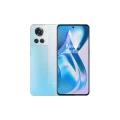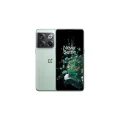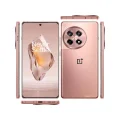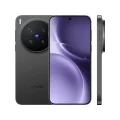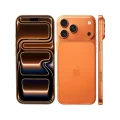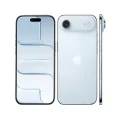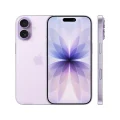- Home
- All Products
- OnePlus
- OnePlus 9E
OnePlus 9E
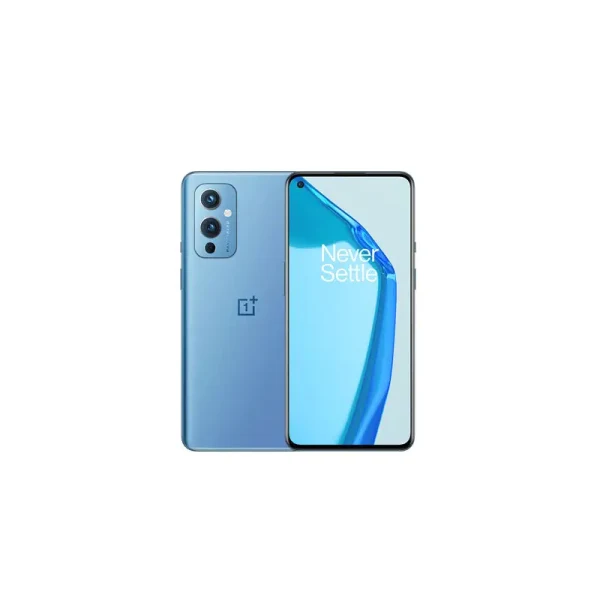

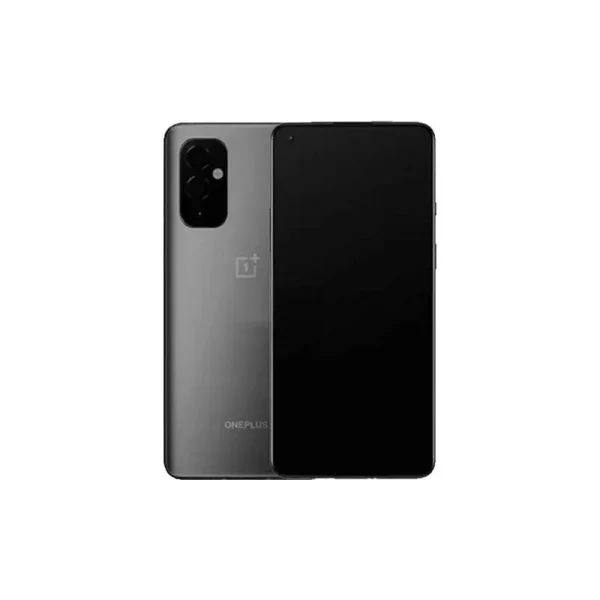


-
Battery: Li-Po 5000 mAh
-
RAM: 8GB
-
Storage: 128GB
-
Display: IPS LCD, 6.5 inches
-
Camera: Rear 64 MP+8 MP+2 MP+2 MP, and Front 16 MP
-
OS: Android 11
Full Specifications
Price
| Official | Not Available |
| Unofficial | About 44999 BDT 8GB/128GB Exp. |
General
| Model | OnePlus 9E |
| Announced | Not announced yet |
| Status | Discontinued |
Design
| Dimensions | - |
| Weight | - |
| SIM SIM (Subscriber Identity Module) is a small card that contains mobile network subscriber's account information. This allows the phone using the card to attach to a mobile network. The SIM card is most commonly associated with GSM and UMTS mobile networks. Moving a SIM card from one phone to another allows a subscriber to switch mobile phones without having to contact their mobile network carrier. SIM cards can also be used by a phone to store limited amounts of data, such as phone numbers and text messages. |
Dual SIM (Nano-SIM, dual stand-by) |
| Colors |
Blue; other colours |
Display Specification
| Display Type Display Technology => A number of display technologies and types used in mobile phones => TFT (Thin Film Transistor), IPS (In-Place Switching), OLED (Organic Light Emitting Diode), AMOLED (Active-Matrix Organic Light-Emitting Diode), Super AMOLED (an even advanced version of AMOLED), Resistive Touchscreen (Resistive touchscreens contain two layer of conductive material with a very small gap between them which acts as a resistance), Capacitive Touchsceen (Capacitive touchscreen technology consists of a layer of glass coated with a transparent conductor) | IPS LCD |
| Size | 6.5 inches, 102.0 cm2 |
| Resolution | 1080 x 2400 pixels, 20:9 ratio |
| Refresh Rate | 90Hz |
| Pixel Density Pixel Density (PPI) is refers to the concentration of pixels on a particular display, measured in pixels per inch (ppi). Pixel density is calculated by dividing the diagonal pixel resolution of a display by its diagonal size, higher pixel density better display quality. | 405 ppi density |
Platform
| Operating System OS => Every computer system run on a base software called Operating System (OS). Operating System controls all basic operations of the computer (such as smartphone, PDAs, tablet computers and other handheld devices). The Operating System allows the user to install and run third party applications (apps), apps are used to add new functionality to the device. | Android 11 |
| Chipset Chipset is a group of integrated circuits designed to perform one or a more dedicated functions, often with real time computing constraints, Popular smartphones are equipped with more advanced embedded chipsets that can do many different tasks depending on their programming. | Qualcomm SM6350 Snapdragon 690 5G (8 nm) |
| CPU CPU (Central Processing Unit) mostly known as processors, CPU processes instructions in order to carry out certain functions that make your device operate properly. Processors are often described as the brain of computers, smartphones and tablets, Smartphones and tablets rely on processors to carry out their every task, Processors are an incredibly important factor in selecting any type of computing device, including your smartphone. | Octa-core (2x2.0 GHz Kryo 560 Gold & 6x1.7 GHz Kryo 560 Silver) |
| GPU GPU (Graphics Processing Unit) is a single-chip processor designed to rapidly manipulate and alter memory to accelerate the creation of images in a frame buffer intended for output to a display, This includes things such as lighting effects, object transformations, and 3D motion. | Adreno 619L |
Main Camera
| Camera Setup | Quad |
| Resolution |
64 MP, f/1.8, (wide), 1/1.72", 0.8µm, PDAF 8 MP, f/2.3, 119˚ (ultrawide) 2 MP, f/2.4, (depth) 2 MP, f/2.4, (macro) |
| Features |
LED flash, HDR, panorama |
| Video | 4K@30fps, 1080p@30/60/120fps; gyro-EIS |
Selfie Camera
| Camera Setup | Single |
| Resolution |
16 MP |
| Video | 1080p@30/60fps, gyro-EIS |
| Features | HDR |
Network & Connectivity
| Technology | GSM / HSPA / LTE / 5G |
| Speed | HSPA 42.2/5.76 Mbps, LTE-A (CA) Cat18 1024/150 Mbps, 5G |
| Wi-fi Wi-Fi is a popular wireless networking technology using radio waves to provide high-speed network connections that allows devices to communicate without cords or cables, Wi-Fi is increasingly becoming the preferred mode of internet connectivity all over the world. | Wi-Fi 802.11 a/b/g/n/ac, dual-band, Wi-Fi Direct |
| Bluetooth Bluetooth is a wireless communications technology for exchanging data between mobile phones, headsets, computers and other network devices over short distances without wires, Bluetooth technology was primarily designed to support simple wireless networking of personal consumer devices. | 5.1, A2DP, LE |
| NFC NFC (Near field communication) is a set of standards for smartphones and similar devices to establish peer-to-peer radio communications with each other by touching them together or bringing them into proximity, usually no more than a few inches. | Yes |
| Positioning | GPS |
| FM Radio | No |
| USB | USB Type-C 2.0, OTG |
| 2G Network |
GSM 850 / 900 / 1800 / 1900 - SIM 1 & SIM 2 |
| 3G Network |
HSDPA 850 / 900 / 1700(AWS) / 1900 / 2100 |
| 4G Network | LTE |
| 5G Network |
SA/NSA |
Battery
| Battery Type Battery Type => Cell phones run on various kinds of batteries depending on the manufacturer, phone size or shape and features. There are basically four types of cell phone batteries => Lithium Polymer, Lithium Ion, Nickel Metal Hydride and Nickel Cadmium. | Li-Poly (Lithium Polymer) |
| Capacity Battery Capacity is a measure (typically in Amp-hr) of the charge stored by the battery, and is determined by the mass of active material contained in the battery. The battery capacity represents the maximum amount of energy that can be extracted from the battery under certain conditions. | 5000 mAh |
| Removable | No |
| Charging | Wired |
| Wireless Charging Wireless Charging (Inductive Charging) uses an electromagnetic field to transfer energy between two objects. This is usually done with a charging station. Energy is sent through an inductive coupling to an electrical device, which can then use that energy to charge batteries or run the device. | No |
Multimedia
| Loudspeaker | Yes |
| Audio Jack | Yes |
Storage
| Card Slot Memory Card Slot is a special slot for inserting a memory card. Memory cards allow you to expand the phone's built-in memory, A memory card (sometimes called a flash memory card or a storage card) is a small storage medium used to store data such as text, pictures, audio, and video, for use on small, portable or remote computing devices such as mobile phones, mp3 players, digital cameras. | microSDXC |
| Internal Storage Internal Storage is a data storage space (flash memory) mostly used in smartphones, tablets and other electronic devices where operating system, apps, music, photos, videos, files and other user data Is stored. |
128GB 8GB RAM UFS |
Sensors
| Fingerprint | Yes (rear-mounted) |
| Other Sensors | accelerometer, gyro, proximity, compass |
About the OnePlus 9E
The OnePlus 9E was planned as a mid-range smartphone in the OnePlus 9 lineup but was ultimately cancelled before launch. It was expected to run Android 11 with OxygenOS and feature a 6.5-inch FHD+ IPS LCD display with a smooth 90Hz refresh rate. Powered by the Qualcomm Snapdragon 690 5G processor and 8GB RAM, along with 128GB UFS storage and microSD card support, it targeted users who wanted affordable performance with 5G connectivity. For photography, the phone included a quad rear camera setup with a 64MP main sensor, 8MP ultrawide, 2MP depth, and 2MP macro lens, plus a 16MP selfie camera. A large 5000mAh battery and fast-charging support made it promising for all-day use. Sadly, despite strong potential, the device never officially launched.
Main Key Features
- Display: 6.5-inch FHD+ IPS LCD, 90Hz refresh rate
- Processor: Qualcomm Snapdragon 690 5G (8nm)
- Memory: 8GB RAM, 128GB UFS storage + microSDXC support
- Cameras: Quad rear – 64MP + 8MP ultrawide + 2MP depth + 2MP macro; 16MP selfie
- Battery: 5000mAh Li-Po
- OS: Android 11
- Connectivity: 5G, Wi-Fi ac, Bluetooth 5.1, NFC, USB-C
- Audio: 3.5mm headphone jack, loudspeaker
Pros & Cons
Pros:
- 5G-ready Snapdragon 690 chipset
- Large 5000mAh battery for long usage
- Expandable storage (rare in OnePlus phones)
- 64MP quad-camera setup
- Headphone jack included
Cons:
- IPS LCD instead of AMOLED
- Average macro and depth cameras
- Cancelled, never officially available
- Rear-mounted fingerprint sensor (less modern)
Why Choose This Phone?
The OnePlus 9E would have been a perfect choice for users wanting 5G support, strong battery life, expandable storage, and a versatile camera setup in a budget-friendly package. Its inclusion of a headphone jack and microSD card slot made it even more appealing for practical users.
Opinion
The OnePlus 9E had all the ingredients to be a successful mid-range smartphone—solid specs, big battery, expandable storage, and affordable 5G performance. Unfortunately, since it was cancelled, buyers had to look towards alternatives like the OnePlus Nord series. Had it been launched, it could have been a strong competitor in the sub-flagship market.
See Another Model:
FAQs about OnePlus 9E
Q: Was the OnePlus 9E officially released?
A: No, it was cancelled before launch.
Q: What was the expected display type?
A: 6.5-inch FHD+ IPS LCD with 90Hz refresh rate.
Q: Did the OnePlus 9E support expandable storage?
A: Yes, it was rumoured to support microSD cards.
Q: How good was the battery?
A: It featured a large 5000mAh battery with fast-charging support.
Q: Would it have supported 5G?
A: Yes, the Snapdragon 690 chipset supports 5G connectivity.
Give Your Review
Disclaimer Note
You can write your own disclaimer from APS Settings -> General -> Disclaimer Note.
